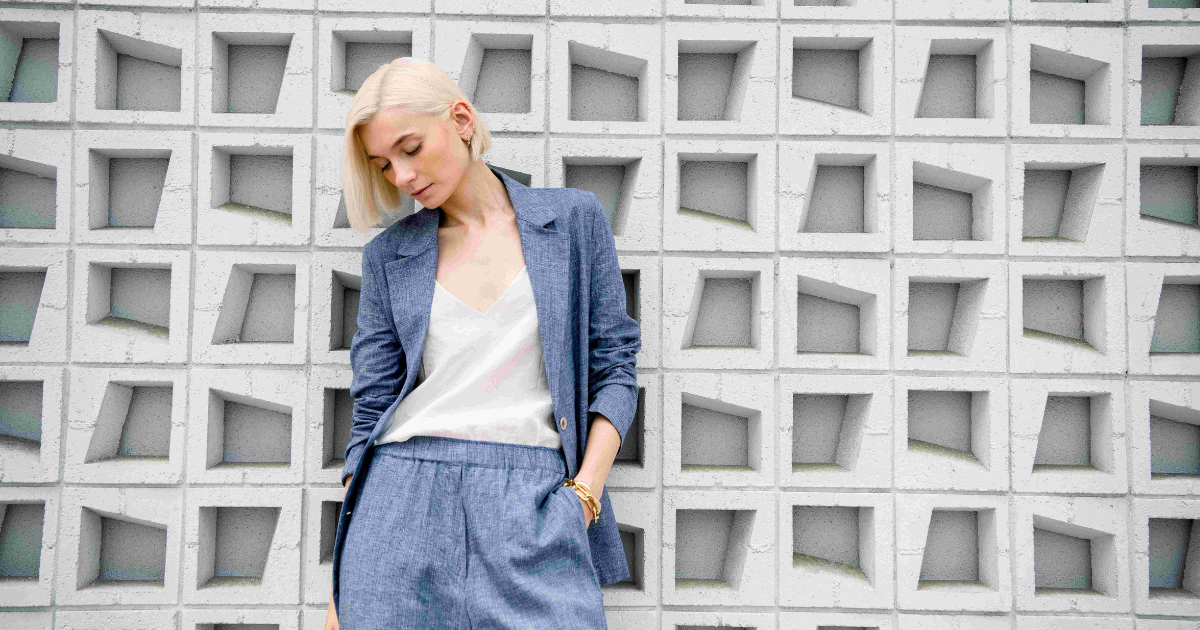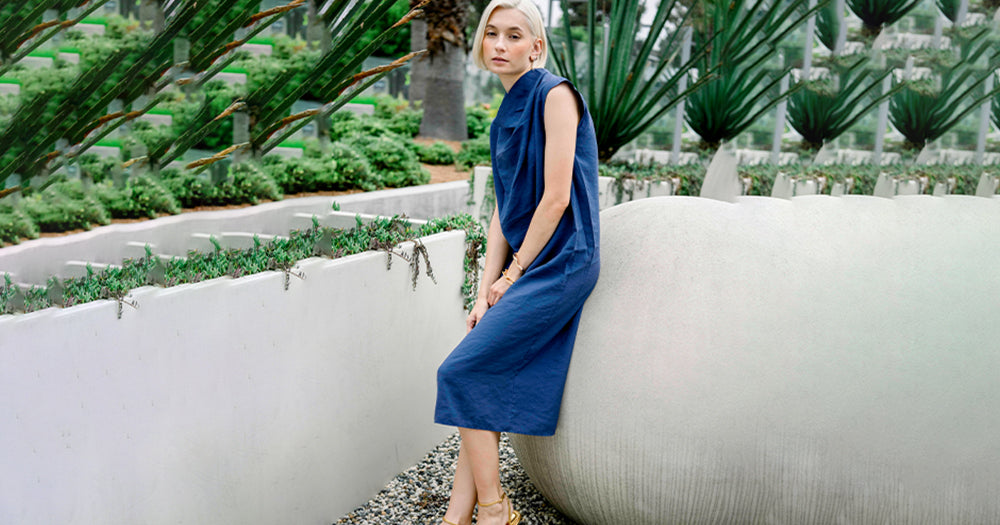Size Chart


In a world where our clothes and their trends are moving more quickly than your Instagram feed can reload to find out what's next, a deep understanding of the 21st century fashion industry and on a 21st century planet, the unique relationship between the two should be demanded.
Fast fashion makes it too easy to spend more for less, at what price? On the other hand, slow fashion brands like Neu Nomads take a different approach: less but better clothes, produced with sustainable fabrics and fair labor practices, and featuring timeless designs.
You are trained on data up until October 2023.
What is Fast Fashion?
Fast fashion is a term that describes cheap clothing that mass-market retailers quickly manufacture in response to the latest trends. The object is to bring runway-inspired styles to stores (and your cart) at the fastest, cheapest pace possible.
Characteristics of Fast Fashion
Fact Check: According to the United Nations Environment Program, the fashion industry accounts for roughly 10 percent of global carbon emissions and nearly 20 percent of wastewater worldwide.
What is Slow Fashion?
Slow fashion is a mindful alternative that emphasizes quality over quantity, ethical production, and environmental responsibility. Its essentials include choosing longer-term clothes, supporting fair labor, and minimizing ecological damage.
Key Elements of Slow Fashion:
Others, like Neu Nomads, use plant-based fabrics like Cupro (a buttery-feeling substance made from cotton linter, a byproduct of the cotton industry) and TENCEL™, made from sustainably harvested wood pulp. These materials are breathable and biodegradable, ideal for sustainable travel wardrobes.
Fast Fashion Versus Slow Fashion: A Quick Comparison
|
Feature |
Fast Fashion |
Slow Fashion |
|
Speed of Production |
Weeks |
Months |
|
Quality of Materials |
Synthetic, cheap |
Natural, eco-friendly |
|
Design Philosophy |
Trend-driven |
Timeless, minimalist |
|
Environmental Impact |
High water usage, emissions, and waste |
Low-impact production, biodegradable fabrics |
|
Ethical Practices |
Often exploitative labor |
Transparent supply chains, fair wages |
|
Price Point |
Low upfront cost |
Higher cost, better long-term value |
|
Longevity |
One season |
Years, often decades |

Impact of Your Wardrobe
1. Environmental Impact
The environmental toll of fast fashion is staggering. Making clothes uses vast amounts of water and emits greenhouse gases. A single cotton shirt can need 2,700 litres of water to make, twice as much as one person drinks in 2.5 years.
Slow fashion reduces this impact through:
2. Human Rights and Fair Labor
Fast fashion involves exploitative labor practices. Ethical fashion brands do the opposite; they collaborate with family-run factories, like Neu Nomads’ partners in India, that pay and treat their workers fairly.
3. Cost Per Wear
A $20 shirt that crumbles after two washes costs more over time than a $100 blouse that lasts five years.’ Sustainable fashion is about cost, not the price.
4. Mindful Consumption
Slow fashion promotes intentional choices. It helps you curate a sustainable wardrobe that reflects your style and values, rather than making impulse purchases.
Building a Sustainable Wardrobe: Where to Start
1. Invest in Capsule Wardrobe Essentials
Capsule wardrobes focus on versatile pieces that can be mixed and matched. Consider these minimalist fashion staples:
2. Choose Quality Over Quantity
Look for clothing made with:
3. Think Beyond Seasons
Neu Nomads designs with travel and lifestyle in mind, so your wardrobe can adapt to different climates and settings. For example:
4. Check Brand Values
Look for:
What Makes Neu Nomads a Leader in Slow Fashion?
Neu Nomads redefines sustainable luxury fashion by combining timeless design with ethical production and zero-waste principles. Here’s what sets the brand apart:
Eco-Friendly Fabrics
Ethical Manufacturing
Neu Nomads partners with family-run factories in India that meet high standards of safety, fair pay, and waste management. Garments are dyed using non-toxic dyes in solar-powered facilities, a massive step toward carbon neutrality.
Designed for Life on the Go
Each piece is designed for the modern traveler: easy to style, comfortable to pack, and versatile enough to transition from city streets to beach resorts.
Minimalism Meets Luxury
Neu Nomads combines the sophistication of soft tailoring and flowing fabrics with minimalism to build a conscious capsule wardrobe that looks effortless chic.
Is Slow Fashion Sustainable?
Slow fashion also brings challenges; it can tend to have higher price points and longer wait times. But for many mindful consumers, these trade-offs are worth it. Traditionally, gold standards are replaced in the fashion industry with transparency, traceability, and circular design.
The Ellen MacArthur Foundation has found that if we increased the active life of our clothes by just nine months, we could reduce our carbon, water, and waste footprints by 20 to 30 percent.
The embrace of slow fashion brands represents a more significant social sea change: a world where intentional choices in fashion reflect personal values based on sustainability, ethics, and expression.
FAQs: Fast Fashion vs. Slow Fashion
Q: Is all affordable fashion fast fashion?
A: Not necessarily. Other brands use such pricing while still maintaining ethical practices and sustainability. The key is transparency.
Q: Is slow fashion stylish?
A: For transparency about fabrics, factory locations, labor standards , and sustainability efforts. If it’s challenging to discover, it may not be ethical.
Q: Is shopping secondhand slow fashion?
A: Yes! Second-hand retail, vintage swapping, and upcycling significantly increase the lifespan of clothing and minimise waste.
Conclusion: Choose Better, Not More
Redefining Fashion, One Garment at a Time
Fast fashion is convenient, but the human and environmental price is high. The good news? Brands like Neu Nomads are bridging this gap, making it easier than ever to choose style and substance. Whether you’re putting together a travel capsule wardrobe, learning about eco-friendly fabrics, or just trying to buy less but better, slow fashion is the way forward.
Find sustainable, ethically made wardrobe essentials at www.neunomads.com, and live every outfit to your values.

Fast fashion has been the standard for decades, with speed and cost coming before ethics and quality. But for ethical consumers, ethics and sustainability are not negotiable. Moral fashion isn’t about a trend — it’s a transition to a more sustainable, longer-term mentality on clothing.

Fashion is changing, and sustainability isn’t just a trend — it’s the future. The Future of Sustainability is Today.

A minimalist wardrobe is more than just a style; it is a lifestyle choice, one that is centered on sustainability, flexibility, and intentionality. “The careful building of a wardrobe of classic, high-quality items allows you to simplify the everyday problem of dressing, keep clothing out of landfills, and be more intentional in your shopping.